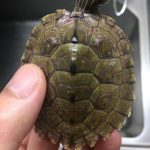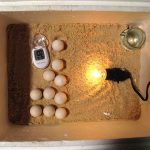Turtles
How to Take Care of Snapping Turtle Eggs? #Incubating #Hatching
Snapping Turtles are perhaps the most aggressive breed among the turtles. The snapping turtles get their name because of the powerful jaws that they showcase. These turtles spend most of their time underwater, and you would perhaps never notice them until they are ready to hatch.
Contents
This post is more about the Snapping turtle eggs than about the Snapping turtles, and that is what we would cover today. Once again, more than the turtle eggs, we would want to understand and discuss how to take care of snapping turtle.
How to Take Care of Snapping Turtle Eggs?
The Snapping turtles live all their life under the water. You will find a female snapping turtle coming to the land only when it is ready to lay the eggs. A snapping turtle mates typically in the autumn and can keep the sperm inside her reproductive tract for several years. She will lay the eggs only when it is absolutely safe to do so try finding the right spot for the purpose.
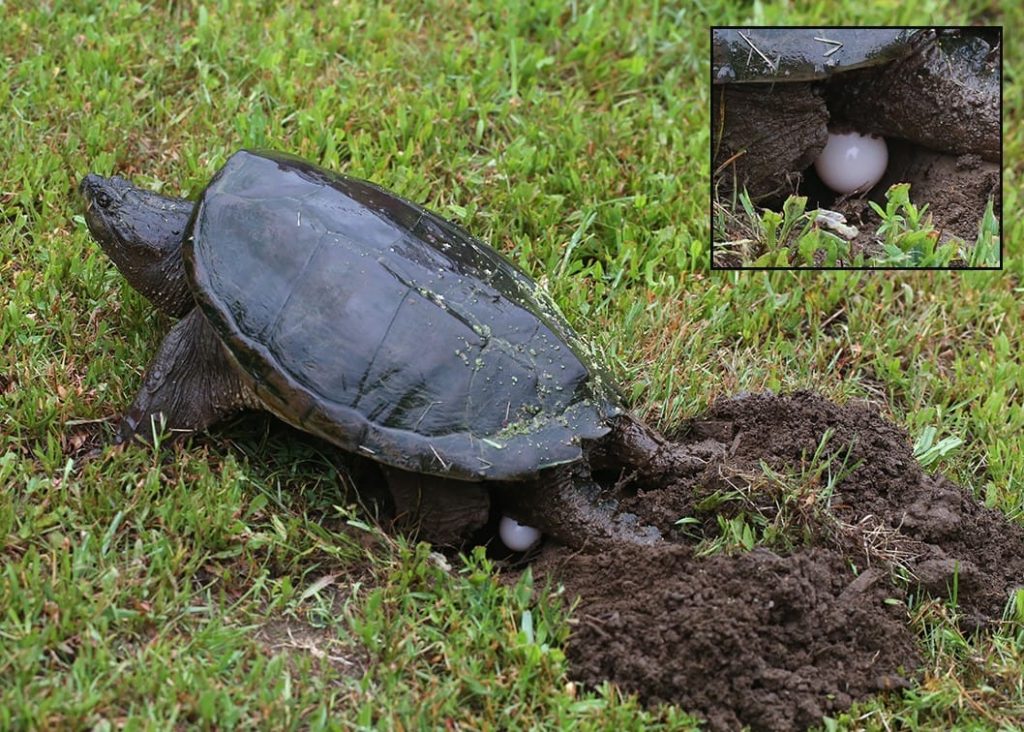
So, what if you found the abandoned Snapping Turtle eggs, or you have kept a snapping turtle and want to take care of the eggs? The tips here would be much helpful.
Leave the Turtle eggs on their own
The snapping turtle eggs are typically buried inside the bottle-shaped hole around 6 to 8 inches deeper. They should ideally develop and hatch in 55 to 125 days. In the wild, if the temperature is high enough, the snapping turtle eggs hatch in 80 to 90 days. In some exceptional cases, where the temperature is relatively high, they will hatch in just around 60 days.
The best option is NOT to disturb them. It would be a good idea to not to disturb the eggs and leave them alone. Just in case you are looking to uncover a nest for any reason, make sure you cover it gently without disturbing the eggs. It would be advisable to leave the eggs at nature’s hands and let nature itself take its course of action.
Just in case you fear an attack from predators or any other issues, you can consider moving them to a safer area. But just ensure that you do not shake or rotate them. If you do that, you will end up damaging them.
Take care when moving the eggs
If you are moving the eggs to a safer location, make sure you follow a few precautions. You can take each of the eggs and mark the top of each egg before removing it from the original location. You should keep them in the same orientation that they are laid.
Ensure that you have used a nontoxic marker to mark the eggs. Carry them gently to the right locations. Moreover, do note that Snapping turtle eggs may be laid in the 100’s. While in most of the cases, the snapping turtle lays 20 to 40 eggs, but you may find them laying even 100 eggs.
Ensure that the eggs are alive
It may be a good idea to check the eggs to find if they are alive. Candling them by holding them against a bright light can be helpful in finding if they are alive. If the egg is alive, you can find a web of blood vessels in a newly laid egg.
Any egg that does not have the blood vessels or no embryo is not fertile, and it should immediately be discarded.
Build an incubator
While you can simply use a sand-filled bucket in a warm area so that the eggs stay at a precise temperature. You can fill a 5-gallon aquarium with 7 to 8 inches of sand to house the eggs. Place this aquarium inside a larger aquarium of say 10-gallon capacity.
You can then fill the outer aquarium with water. Use an aquarium heater to maintain the requisite temperature. It may be worthwhile to place yet another thermometer inside the sand in the inner aquarium. The temperature of the eggs should be between 70 to 72 degrees.
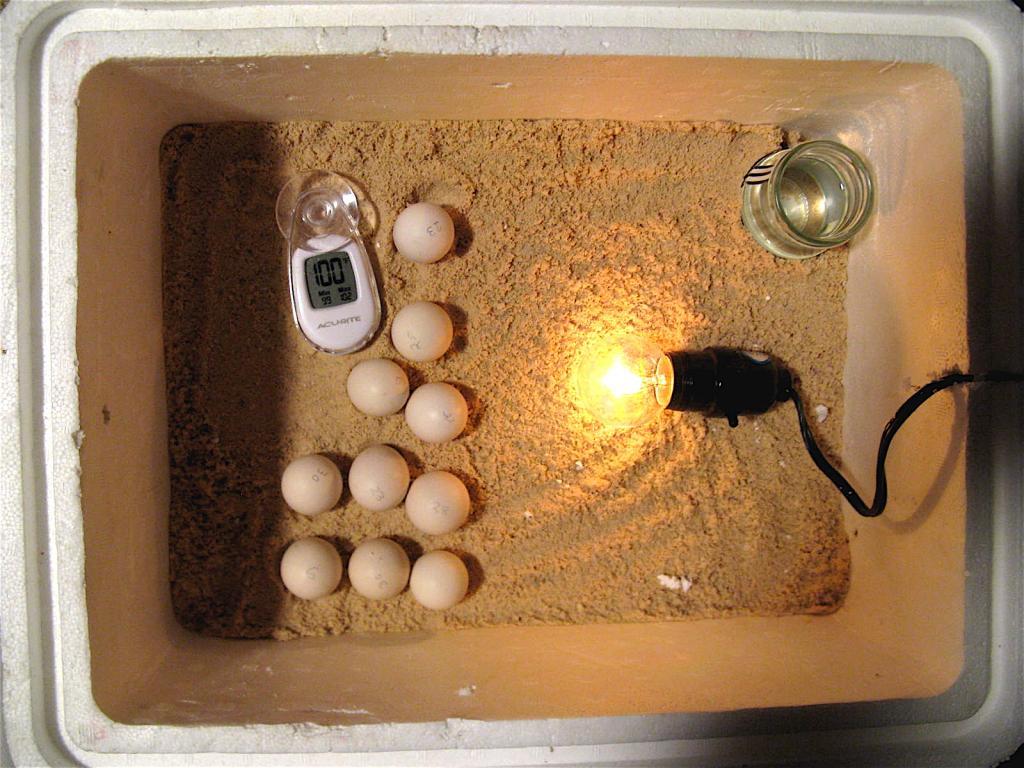
A temperature of around 68 degrees produces female turtles, while a temperature of 73 to 75 degrees should produce male turtles. Keeping the eggs at 70 to 72 degrees will help you get a proper mix of gender.
Wait for the hatching
The eggs should ideally hatch in around two to three months of incubation. All the 20 to 40 eggs in a crutch may not hatch in go. It may also be possible that not all the eggs will hatch. A 10 gallon aquarium should ideally house around tow to three hatchlings.
The Best DIY Incubator for Snapping Turtle Eggs
You can prepare a perfect incubator that you would use as above form the material that can be easily be sourced from around you.
That completes the setup. Monitor the temperature for a few days until it stabilises. Make sure the temperature is stabilised before placing the eggs inside the setup.
Make the indentations into the substrate you created. The eggs should be placed halfway down.
That does it. Keep a tab on the temperature. Please note that there may be a difference in the temperature during the day and night.
How Long Does it take for Snapping Turtle Eggs to Hatch?
Under normal circumstances, Snapping turtles hatch their eggs in 80 to 90 days. But, it would ideally dependent on the exact temperature and a wide range environmental conditions.
You may find the time taking a little longer until, say a maximum of 125 days. When the temperature is extremely higher, you may get them hatched in around 60 days. In any case, the ideal hatching time for the Snapping turtle would be around 90 days.
How Deep do Snapping Turtles Bury their Eggs?
Snapping turtles lays her eggs in early summer and the eggs are laid up to 4 to 7 inches deeper. The exactly how deeper would be dependent on the soil at the site of laying the eggs.
Snapping turtle normally looks for an area with loose soil. It may also lay its eggs in areas such as sand, loam, vegetation debris or sawdust. It just buries the eggs 4 to 7 inches deeper, and then covers the area. The hatching of the eggs is left to nature and the mother never comes back to her eggs.
How many Eggs does a Snapping Turtle Lay?
The snapping turtle would ideally lay the eggs in a period that may range several hours. One crutch of eggs laid by a Snapping turtle can vary between 20 and 40. One crutch of eggs is laid May or June. The eggs per crutch would be around 20 to 40, but in some cases, you may find 100’s of eggs.
The Closing Thoughts
Well, handling and taking care of the Snapping turtle eggs is almost similar to handling the eggs of other turtle species. Just ensure that you do take care of the eggs and the turtle eggs are very delicate. Except for the time taken to hatch and the incubation temperature required, rest of the care and handling remains the same as with other turtle species.

-

 Skunk4 years ago
Skunk4 years agoWhat Does Skunk Poop Look Like? Images & Identifications
-

 Bunny4 years ago
Bunny4 years agoPregnant Rabbit Labor Signs #Test#Symptoms#Age#Length
-
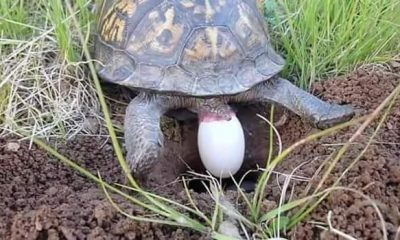
 Turtles5 years ago
Turtles5 years agoHow To Take Care of Turtle Egg At Home?
-

 Turtles4 years ago
Turtles4 years ago8 Basking Rocks/ Platforms for Turtles – A Perfect Guide
-

 Bunny5 years ago
Bunny5 years agoHow to Get Rid of Mites on Rabbits? #NaturalRemedies #Video
-

 Horse4 years ago
Horse4 years agoHow Much Weight Can a Horse Carry? #Clydesdale #Friesian #Mustang #Draft
-

 Bunny5 years ago
Bunny5 years agoHow to Potty Train a Rabbit in House? Tips on Litter Training
-

 Bunny5 years ago
Bunny5 years agoHow Big Do Dwarf Bunnies Get? – Amazing Facts #Images


